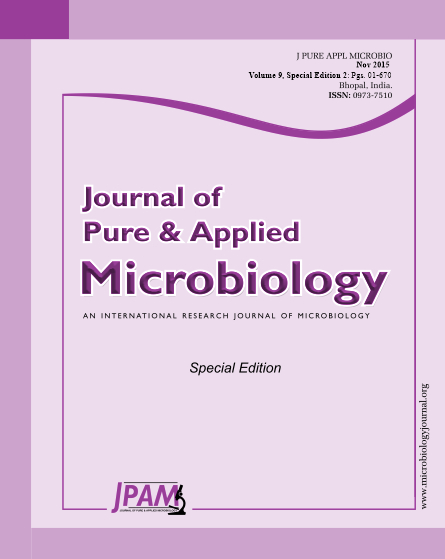Rice is an economically important food crop, which is subjected to infection by fungal, viral and bacterial pathogens. Plant growth-promoting rhizobacteria (PGPR) are beneficial bacteria that colonize plant roots and enhance plant growth by a wide variety of mechanisms. The potential negative effect of chemical fertilizers on the global environment and the cost associated with production had lead to research with the objective of replacing chemical fertilizers with bacterial inoculants. Pseudomonas fluorescens is an important among PGPR because it is having an ability to induce plant growth as well as control the growth of pathogens. Native population of these rhizobacteria play an important role in the sustainable agriculture as they majorly dominate the rhizosphere. In the present study thirty native P. fluorescens isolates were isolated from the rhizosphere of rice from the Rangareddy district, Telangana and characterized by morphological, cultural and biochemical tests.
Pseudomonas, native population, plant growth promoting rhizobacteria (PGPR)
© The Author(s) 2015. Open Access. This article is distributed under the terms of the Creative Commons Attribution 4.0 International License which permits unrestricted use, sharing, distribution, and reproduction in any medium, provided you give appropriate credit to the original author(s) and the source, provide a link to the Creative Commons license, and indicate if changes were made.


